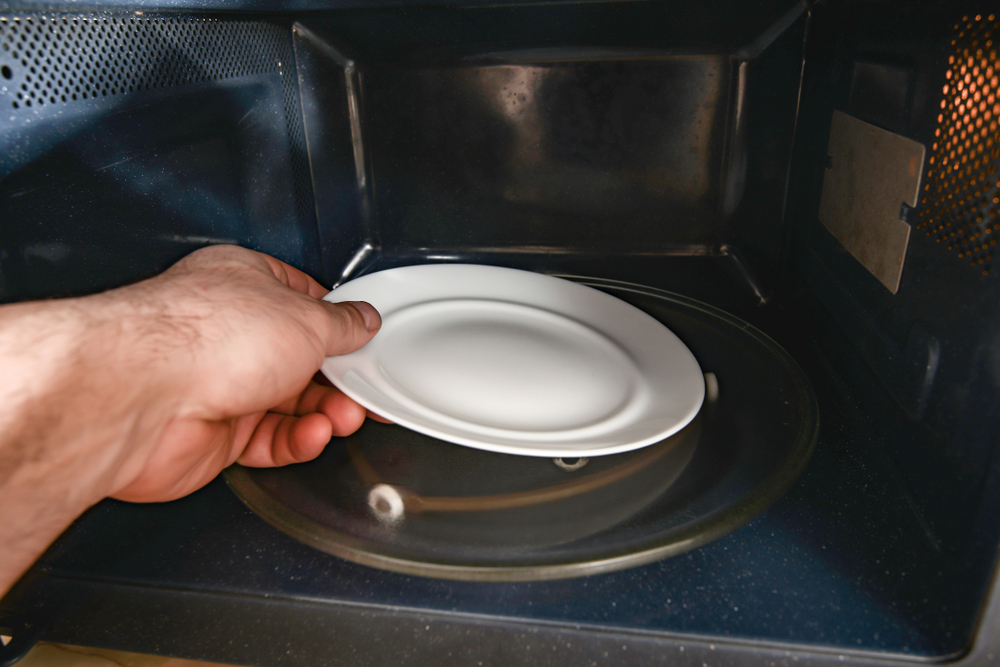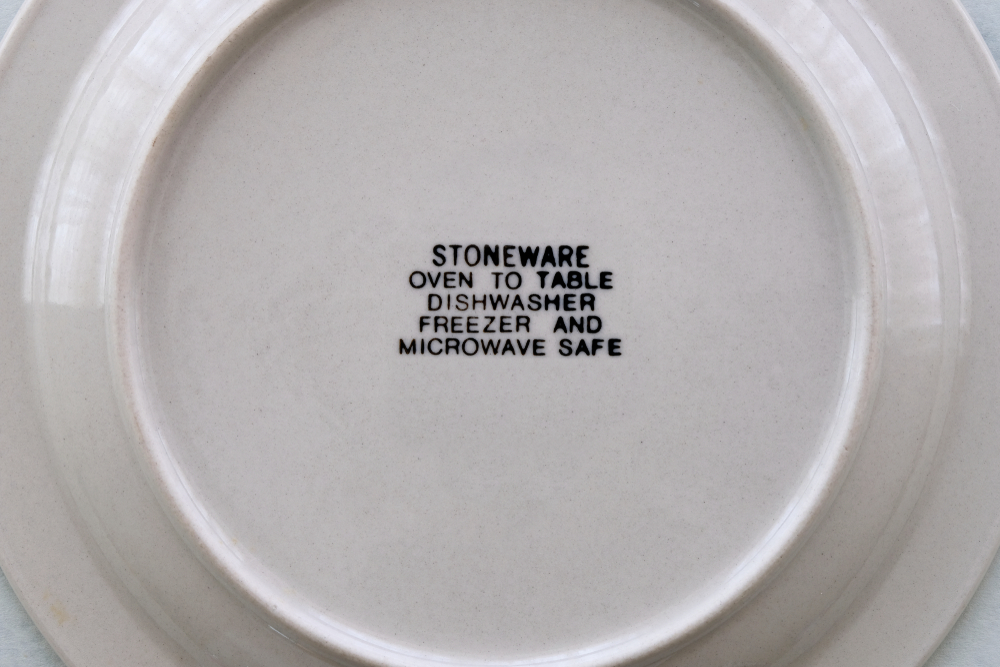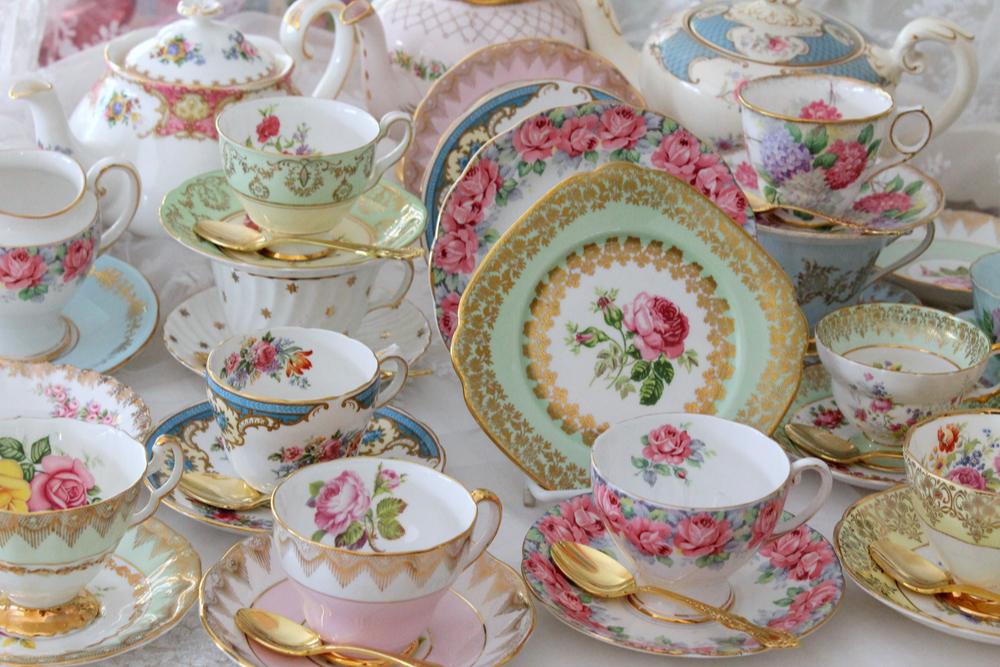There is a danger of putting the wrong dish or plate into your microwave. A metal bowl or utensil causes fire and certain ceramic dishes leak dangerous chemicals into your food. Some plates crack, and plastics melt. It's important to know if your chinaware is microwave safe.
Chinaware is a popular form of dinnerware set and is collected all over the world. The tableware is decomposing granite called kaolin, and the porcelain ware originated in Jiangxi during the T'ang Dynasty. The name comes from its place of origin.

Some China Plates are Microwave Safe - Others Definitely Aren’t
There are several styles of chinaware, and their variety depends on factors such as the firing temperature, the clay content used, and designing materials. Finding excellent sources of information regarding kitchen knowledge is essential for health and safety, especially regarding microwave safety and the types of china most commonly used.
Earthenware is the least durable member of the china family. It's fired at the lowest possible temperature meaning earthenware can break easily. Earthenware comes either glazed or unglazed. One feature of this type is that it is coarser than other variations. Here is more information on earthenware china.
Stoneware is the next member of this dinnerware family. It's fired at a higher temperature than earthenware, and its durability makes it dishwasher safe. Stoneware also has a thicker build than other variations.

This Stoneware Plate is Ready for the Dishwasher, Freezer, and Microwave
Porcelain's main ingredient is kaolin and undergoes the highest temperatures possible. In general, porcelain is both dishwasher and microwave safe. During its time in the kiln, porcelain into a glass-like material called vitrification.
Fine China is a higher-grade version of porcelain because of the translucent materials it contains. The elegant ware dates back to 11 BC and mixes with quartz and feldspar. Fine china incorporates decorative features added over its glaze. It is also durable and both microwave and dishwasher safe.
Bone is the favorite member of the china family and is the highest grade possible. Cow bone is crushed and added to this variation of the tableware. And the amount of bone ash used determines the quality of the china. On average, bone ash comprises 30 to 45 percent of bone china.
Chinaware is extremely popular, and it's no surprise that hundreds of thousands of patterns and styles are available. The tableware is collected everywhere, and experts spend a lifetime learning all the nuances of chinaware. A standard china set comprises five pieces: the dinner plate, salad plate, bread and butter plate, tea cup, and saucer.
Traders from Europe traveled to China between the 13th and 17th centuries to collect this popular dish set. By the 18th century, artisans in Europe replicated the ancient Chinese process, making the availability of chinaware astronomical. These artisans added dishes to the collection as part of the formal table.
Those dishes that were not part of the place setting included the soup bowl, fruit or dessert bowl, luncheon plate, cereal bowl, mug, cream soup with saucer, demitasse cup with saucer, and the charger.
But it doesn't stop there. Multitudes of serving pieces are now available due to the globalization of chinaware artistry.
The sugar bowl with its lid and handles rests in many households. A popular dish is the gravy bowl equipped with a double spout and underplate. The coffee pot and teapot are both commonly seen as well. This website offers a comprehensive list of the types of china pieces.
Knowing which dishes in your cabinets are safe for the microwave keeps you healthy and safe. There are items on both sides of the spectrum. Paper plates are safe, and plastic ware will melt. But beware of paper plate with plastic coating because they may or may not be microwavable. It's best to check the label or manufacturer's information beforehand.
Do not place any metals in a microwave, including stainless steel. Stainless steel has a shielding effect that reflects microwave radiation and won't heat your meal or drink regardless. When stainless steel comes into contact with microwave walls, its sparking effect causes fires. Placing stainless steel in your microwave also shortens the lifespan of its magnetron tube.
Most varieties of chinaware are safe because of the materials of the dishes. However, some china sets have metal decorations that cause sparks in microwaves. It's best to error on the side of caution when handling chinaware and to understand how to determine if they are microwavable.

Decorative China - Especially with Metal Shouldn’t Go in the Microwave
Knowing whether a dish is microwavable means it won't melt, crack, or cause damage to your health or home. Fire isn't the only risk. Chemicals from non-microwavable dishes leak into foods and cause illness. These are some ways to test for safety.
The first way to check the safety of your dish is by placing it side-by-side with a microwavable glass or cup of water. Dinnerware that is too large to place adjacent to a cup underneath it instead is fine. The cup itself must be microwavable before conducting the test. Fill the cup three-quarters of the way, and set the microwave for one minute on its high setting.
Use a potholder to remove the glass of water, then touch the dish and the water. The item is not safe for the microwave when it is warm, but the water in the cup is not. However, it is microwave safe when the result is the opposite. A dish is microwavable when it doesn't absorb heat.
Modern dishes have labels that announce their safety for microwave cooking. The words "microwave safe" are often written clearly on the bottom of the cookware, or a stamped pair of horizontal, wavy lines are on the bottom of the dish. But a substantial amount of china existed well before the modern microwave, and determining what is or isn't safe for cooking is crucial.
Most chinaware is microwave safe. So are glassware, ceramics, and porcelain dishes. It is safe to place china in a microwave under most conditions. However, avoid using a microwave when metal decorations such as gold or silver lining. Lead-glazed china is also dangerous, and never disregard directions stating that the item is not safe for the microwave.
Don't microwave china with lead glaze because lead is toxic and transfers to your food. Lead is a dangerous metal in general. It becomes riskier when used in cooking. Clay dishware with a transparent glaze, decorative dishware with vibrant colors, and antique dishware may include lead. Home lead test kits are available to purchase
Bone china is the most popular variation of chinaware because it is elegant and appealing. It is also functional and durable. Bone china is thin, but it is considered the strongest ceramic. It's durable and resistant to chipping and is safe for microwaving as long as there are no decorative metals.
Bone china is an excellent dish for microwave use because its material does not absorb microwave radiation. Bone china - and most china - remains cool while cooking meals. However, some dangers come with using chinaware for microwave cooking.
Avoid exposing bone china to extreme heating. Sudden temperature changes decrease the durability of chinaware. Transferring china from high heat to room temperature leads to breaks and cracks. Let the dinnerware cool before removing it from the microwave.
Although chinaware is dishwasher safe, avoid exposing it to the harsh treatment of dishwasher cycles.
Dishes with gold plating or design are especially vulnerable in dishwashers. Their color will dull over time. Load chinaware delicately to avoid chipping and cracking because high heat and rough cycling lead to cloudy and flaking ware. It's always best to handwash china dinner and tableware whenever possible.
In conclusion, most china pieces are microwavable. Knowing how to determine their microwave safety increases their lifetime and value. One Qing Dynasty porcelain vase sold for $84 million, so it's well worth keeping this ware in excellent condition.
Avoid microwaving china with metal decorations or ware that is lead-glazed. Take precautions when removing china from microwaves and let the dinnerware rest before exposing it to room temperatures. Gentle washing will ensure its longevity also. Knowing items that are safe for the microwave is always a plus. And enjoy these beautiful ancient pieces.
